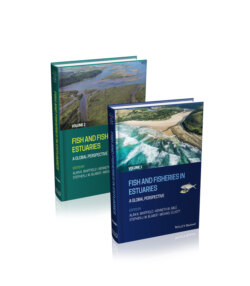Читать книгу Fish and Fisheries in Estuaries - Группа авторов - Страница 66
3.4.1 Adult stock
ОглавлениеAdult abundance, population age structure, nutritional condition and access to spawning areas exercise controls over egg production and quality and initial early‐life stage abundances. Adults of many fishes that spawn in or utilise estuaries are highly vulnerable to fishing (e.g. alosines, salmonids, moronids, sparids, percids), leading to depleted adult abundances and to ‘recruitment overfishing’, a circumstance in which too few adults remain in the population to assure adequate replenishment of the stock. The depletion of the moronid Morone saxatilis on the east coast of North America from overfishing is a prime example (Goodyear 1985, Richards & Rago 1999) as is that of the percid Sander lucioperca in the shallow embayments of the Baltic Sea (Müller‐Karulis et al. 2013, Mustamäki et al. 2014). In South Africa, immature stages of the sciaenid Argyrosomus japonicus and the sparid Lithognathus lithoganthus, amongst others, are exploited as juveniles in estuaries, coupled with exploitation of adults in surf zones (Griffiths 1997, Lamberth & Turpie 2003). The heavy exploitation has led to major stock collapses in these species and current spawner stock biomass per recruit ratios at <5% of pristine levels. Adult stock abundance also is vulnerable to poor water quality and habitat deterioration. In North America, failed recruitments of alosines, anguillids, moronids and salmonids provide unfortunate examples of recruitment declines that are at least partly attributable to depleted adult abundances.
